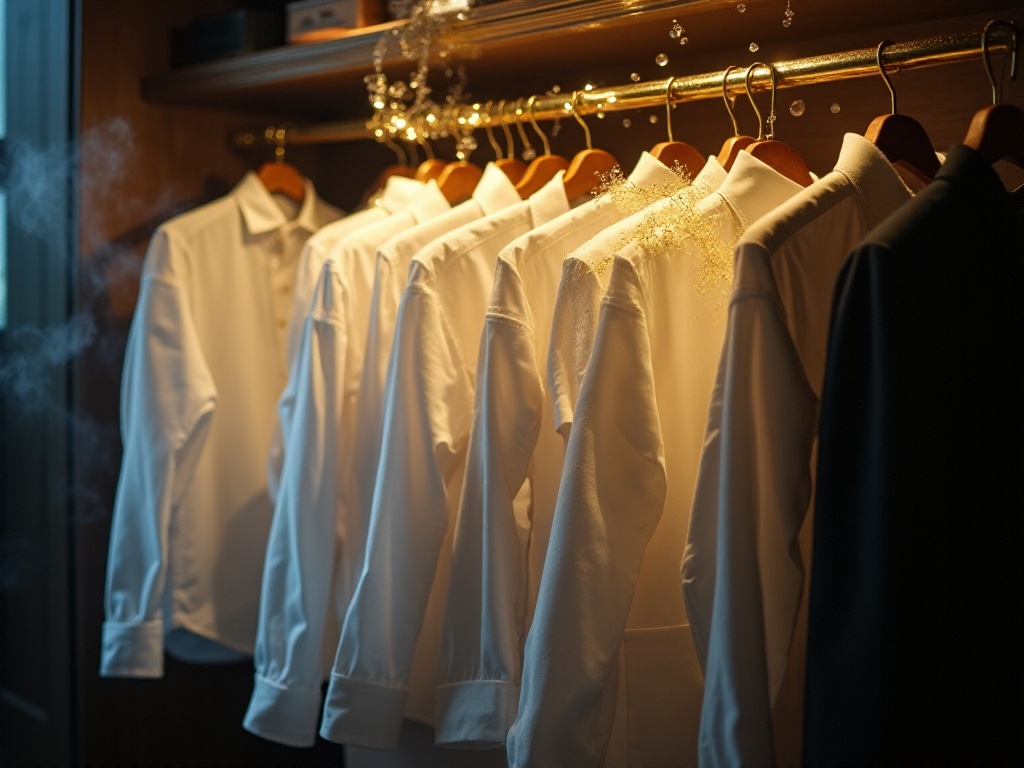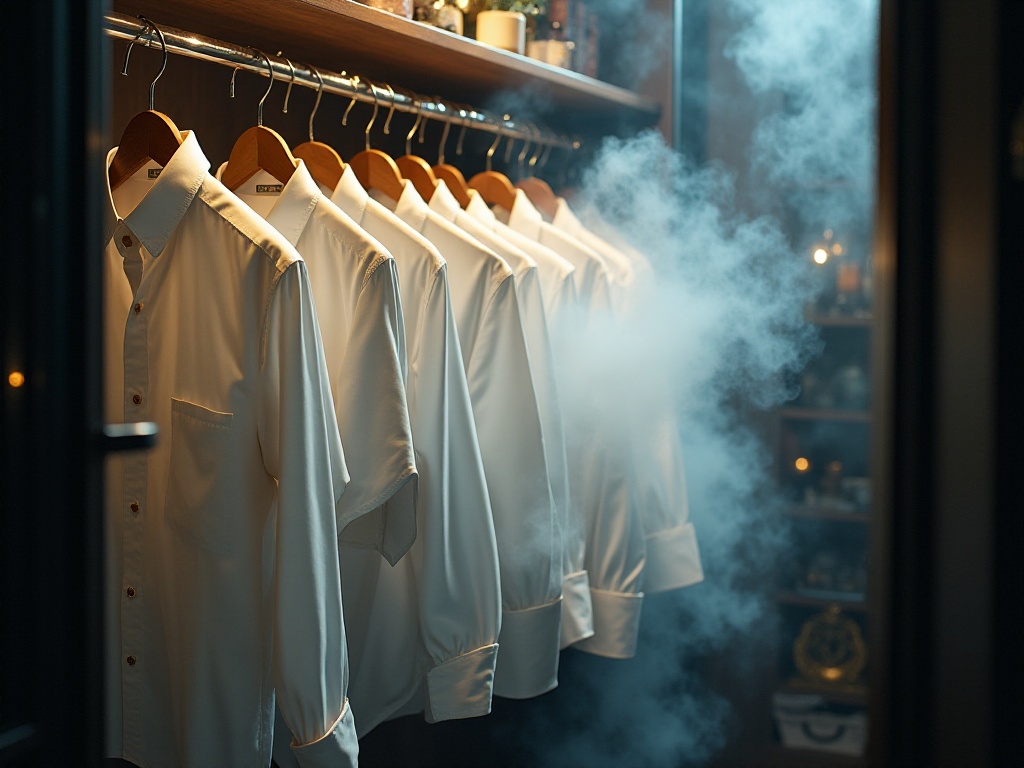Opening Words
What happened last weekend truly shocked me - my fashion-savvy friend made a huge mistake by throwing a silk blouse worth nearly $1,000 directly into the washing machine! This was her favorite piece that she managed to get on sale! Watching her stamp her feet in distress made my heart ache too. As a veteran in the fashion industry, I know this heartbreak could have been completely avoided. Over the years, I've seen too many similar disasters. Today, let me share my accumulated laundry experience to help your clothes last longer and save you unnecessary expenses.
Basic Preparation
Many people might think doing laundry is just throwing clothes into the washing machine, setting a program, and hitting start. However, to get clothes clean without damaging them, there's actually a lot to learn. First, we need to do thorough preparation work - just like makeup, a good base leads to a better overall result.
The Art of Sorting
Speaking of sorting, I have to mention my roommate. Every time she does laundry, she just dumps everything into one huge laundry basket, regardless of color or condition. Once, she washed her new red hoodie with a white T-shirt, and guess what happened? The white T-shirt turned pink! That was her favorite pure white tee too - heartbreaking.
Therefore, sorting is the first step. I've developed a habit of sorting clothes by color before washing: white, light colors, and dark colors all separated. Especially new dark clothes, like jeans or black dresses, which bleed color heavily on their first wash. I remember once my friend washed her new black jeans with other dark clothes, thinking it would be fine since they were all dark, but it ended up staining her beloved navy sweater with uneven patches.
Fabric sorting is equally important. Cotton and linen are durable and can be washed together, but silk and wool need special care. I've seen too many cases of people throwing wool sweaters in with regular clothes. One of my colleagues washed an expensive wool cardigan with her loungewear, and the cardigan shrunk so much it could have been sold as children's wear. These lessons are truly learned the hard way!
Inspection is Critical
Speaking of inspection, I must share a painful experience of mine. When I had just started working, I once rushed to do laundry and forgot a lipstick in my pocket. Can you imagine the scene? Red marks all over the clothes - it was absolutely disastrous. Since then, I carefully check all pockets before washing, and this habit is really important.
You never know what might be hiding in pockets. Sometimes it's tissues that turn into a machine full of lint; sometimes it's coins rattling around; worse yet, I once found someone had left a USB drive in their pocket - goodbye, data. So, taking time to check pockets is never a waste.
Speaking of checking, clothing labels are crucial. Whenever friends ask, "Why did my clothes deform/fade/pill after washing?" my first response is to ask if they checked the label. Often, the label clearly states "dry clean only" or "hand wash in cold water," yet some people ignore it and end up learning expensive lessons.
A friend once bought a four-figure silk dress, which was ruined after just a few wears. When I asked what happened, she said, "It looked sturdy, so I machine washed it at normal temperature." But the label clearly stated "dry clean only." Such painful lessons teach us that labels aren't just decoration - every symbol and word on them is professionally tested.
Practical Tips

Proper Daily Cleaning
Regarding daily cleaning, water temperature is a crucial issue. Many people might think that hotter water cleans better when clothes are dirty. However, cold water actually has many benefits. Especially for everyday items like T-shirts, cold water helps maintain elasticity and prevent color fading.
I have a friend who loves printed T-shirts and used to wash them in hot water, resulting in cracked and peeling designs after just a few washes. After following my advice to switch to cold water, her T-shirts now stay vibrant and the prints remain intact. Printed T-shirts are like our faces - hot water ages them, while cold water keeps them young.
Jeans cleaning is another point many people overlook. When I first started working, I was a laundry novice who threw jeans in the washing machine after every wear. Until one day, I noticed my expensive vintage jeans had lost their original texture after just a short time. Later I learned that jeans don't need washing after every wear. Unless they're stained or smell, wearing them 3-4 times before washing is perfectly fine. This not only maintains the vintage effect but also extends their lifespan.
Also, remember to turn jeans inside out before putting them in the washing machine. This protects the outer fabric while making it easier to clean the inside. My jeans are all cared for this way, and they remain structured and stylish even after several years.

Special Care Techniques
Cleaning valuable garments is truly a science. Take silk, for instance - it's one of the most delicate fabrics. I remember being extremely careful with my first silk shirt. After much practice, I developed a complete care routine.
First, silk must be hand washed, and the water temperature should never exceed 30 degrees Celsius. I use special silk detergent, create suds in a basin, gently submerge the garment, and softly rub stained areas with my fingers. Never scrub like you would with cotton - this damages silk fibers. After washing, don't wring it out; instead, gently press out water with a towel, then hang in a cool, ventilated place to dry.
Wool and cashmere care requires even more patience. These fabrics should be professionally dry cleaned for their first cleaning. For subsequent home washing, always use specialized wool detergent. I've seen too many people use regular detergent on wool sweaters, resulting in hardening or pilling - it's truly wasteful.
Water temperature is crucial when washing wool items. I had a colleague who thought cold water wouldn't clean her branded cashmere sweater well enough, so she used hot water. Guess what happened? That perfectly fitting garment could have fit her daughter afterward. So, wool items must be cleaned gently - it's better to take more time than rush.

Washing Essentials

Detergent is Key
Determining the right amount of detergent is truly a skilled task. I often receive questions from friends like, "Why do my clothes still smell after washing?" or "What's causing these white marks on my clothes?" Often, these issues stem from improper detergent usage.
Generally, for regular clothes, following the dosage instructions on the detergent bottle is sufficient. However, this amount should be adjusted based on actual conditions. For instance, if clothes are particularly dirty or your area has hard water, you might need to add a bit more detergent. But beware - more isn't always better. I've seen people pour in half a bottle of detergent for really dirty clothes, resulting in detergent residue that took multiple rinses to remove.
Using different detergents for different fabrics is also crucial. Just like we use different skincare products, clothes need "targeted treatment." Take athletic wear, for instance - they often have special functional fabrics. Using regular detergent won't effectively remove post-workout odors and might even affect the fabric's functionality. It's better to use specialized sports detergent that can effectively remove odors while protecting the fabric's properties.
Washing Machine Tips
Many people ask me, "Why are my clothes wrinkled like compressed crackers after washing?" This often happens because they don't pay attention to load capacity. I know people want to wash more clothes at once to save time in today's fast-paced life, but this actually counterproductive.
Washing machines need "breathing room." Overloading not only affects washing effectiveness but also creates wrinkles from compression, and can even damage clothes. I recommend leaving enough space for clothes to move freely. Generally, leaving about one-third of the machine's capacity empty is appropriate.
Choosing the right wash cycle is also crucial. Modern washing machines have many functions like quick wash, bulky items, wool cycles, etc. But many people habitually choose the standard cycle, which isn't always right. For example, if you're just washing a few summer clothes with slight sweat stains, the quick wash cycle is perfectly sufficient and saves time and energy. However, for bedding or coats, you need to select the specific bulky item cycle to ensure thorough cleaning.
I want to specifically address the wool cycle feature. Many people might think that since the washing machine has a wool cycle, all wool items can be machine washed. This is incorrect. The wool cycle is only suitable for wool items labeled "machine washable." If the label says "dry clean only" or "hand wash," you must follow those instructions.
Final Steps
The Art of Drying
Drying is a crucial step that determines the final result of your laundry. Many might think hanging clothes is simple, but there's actually much to consider. Take shirts for example - if you just clip them randomly, they'll dry wrinkled. The correct method is to use hangers, and it's best to smooth out wrinkles while the clothes are still slightly damp for a crisp result.
Sweater drying requires special attention. Never hang them like regular T-shirts, as this will cause deformation, especially around the neck and sleeves. The correct method is to lay sweaters flat on a drying rack or towel. For thicker sweaters, it's best to flip them over while drying to ensure even drying on both sides.
Choosing the right drying location is also important. While sunlight can sterilize clothes, strong sunlight can accelerate fading for brightly colored items. Therefore, dark or vivid-colored clothes should be dried in ventilated areas away from direct sunlight. My balcony has two areas - one with direct sunlight for white clothes and bedding, and another shaded area for colored items.
As for ironing, this is another step many people often overlook. Different fabrics require different ironing temperatures, which is crucial. Cotton and linen can withstand high temperatures, which work best for these materials. However, synthetic fabrics must be ironed at low temperatures to avoid damage. I recommend always testing the temperature on an inconspicuous inner area before ironing the entire garment.
Storage Matters
Proper storage after washing is essential. Choosing suitable hangers is the first step, as important as choosing the right shoes. Wooden or velvet-covered hangers are the best choice, as these materials don't deform clothes, and velvet prevents slipping. Especially for valuable coats and suits, quality hangers are necessary to maintain shape.
I've seen many closets where clothes are carelessly hung, resulting in deformed shoulders over time. I recommend using wider hangers for coats and suits to properly support the garment's shape. For suits, choose hangers with crossbars for pants, which saves space and prevents wrinkles.
Regarding odor issues, many people's first reaction is to dry clean. This can be wasteful unless the odor is particularly stubborn. Try simple solutions first. For example, hanging clothes in a well-ventilated area often removes odors. If that doesn't work, try specialized deodorizing sprays - there are many effective products available now.
Consider moth and mold prevention when storing clothes. Especially when storing heavy clothing for season changes, ensure they're completely dry first. I usually sun my clothes before storage, then place them in storage bags. Choose breathable storage bags to prevent mold. Also, add mothballs or sachets to prevent insects and maintain freshness.

Conclusion
After reading all this, do you now see that doing laundry is truly a technical skill? Once you master these basic principles, laundry can become quite simple. Each piece of clothing is bought with our hard-earned money and deserves proper care. Correct care methods not only extend clothes' lifespan but also help us look more presentable every day. Remember, details determine success - in clothing care, a little extra attention saves money and helps clothes last longer and look better.








